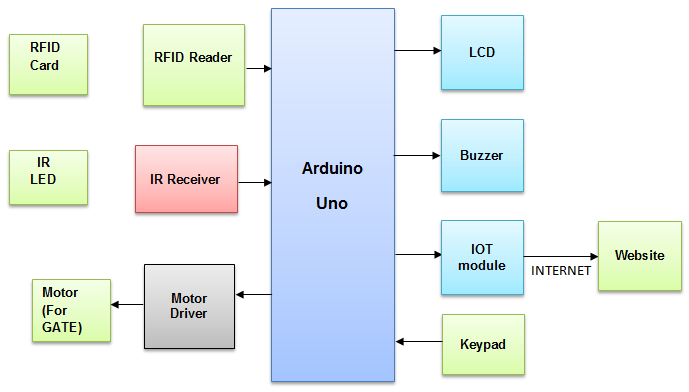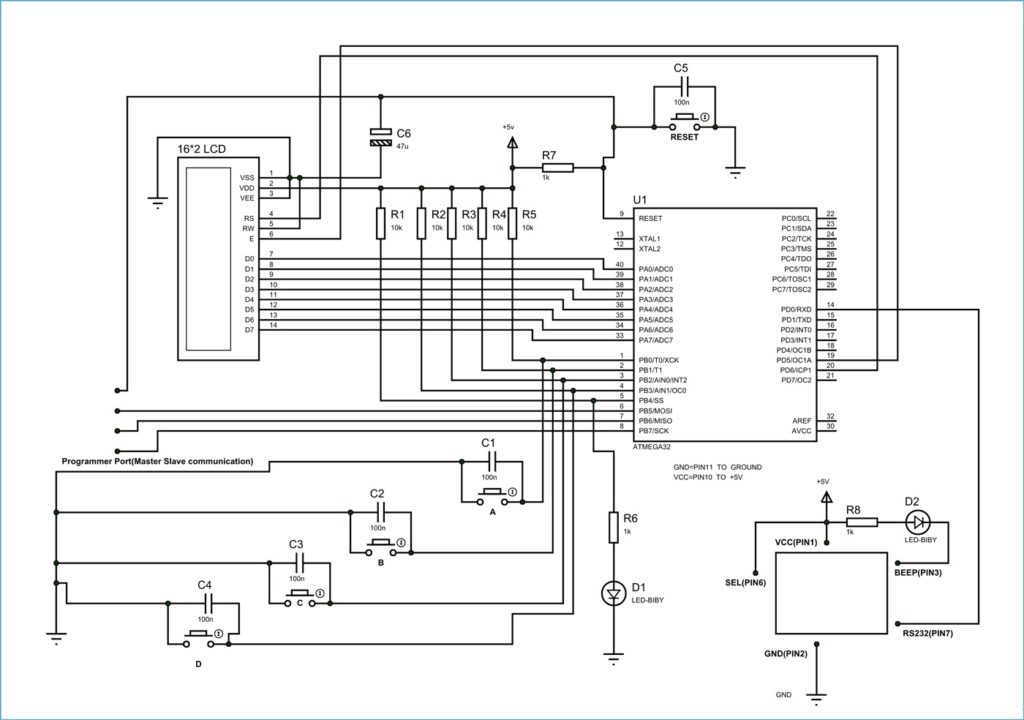The use of automated toll collection system in many metropolitan cities would be an efficient step towards the overcrowding of the city highways in heavy congestion of traffic. As we all know, transportation is the strength of our country’s economy. There are various implementation, protocols in wireless sensor network such as leach-c and components such as RFID, NFC thus enabling reduction in operation costs and motivating cashless transactions. In case of manual toll collection system time consumption is much far worse as well as fuel depletion and most important is the environment, the amount of air pollution that is created at the toll booth site is at high level, so our developed system will reduce time wastage and not only reduce air pollution but also conserve fuel. The sole purpose of this paper is to reduce the hardships caused by manual toll collection system and pass the subject’s vehicle through toll barrier in a matter of few seconds without halt.
Each and every day more and more vehicles are increasing rapidly and the graph of the rate of buying vehicles is exponential, which has become a major problem at the site of toll booths due to heavy traffic causing endless number of problems such as high petrol/diesel consumption leading to depletion of hydrocarbon deposits below earth’s crust and also death causalities due to heavy traffic. The sole purpose of this paper is to motivate cashless transactions by installing automated e-toll collection system and the technology that we used is the use of RFID readers/tags. Basically to tackle this problem, the use of RFID tags that must be uniquely fixed onto subject’s vehicle and RFID reader module must be fixed at e-toll tooth. When a subject’s vehicle passes through the gate, the reader will detect an incoming frequency of 125 kHz of the RFID tag and read a unique no that has been assigned by govt. authority and the toll fee will be deducted from linked bank a/c or the e-wallet of system. This system is capable of saving time as well as fuel conservation which can save a lot of individual’s economy. This particular system is far much better and very efficient towards people as they will not stay in a long and lengthy queue thus automated e-toll system will eliminate the hardships of people parking vehicles in a long queue. RFID has the potential of eliminating corruption at local level and also reduce operational costs as well as errors in human operations. WSN’s i.e. wireless sensor networks are basically used in different scenarios such as home, office, healthcare, agriculture and also at toll collection plaza which can capture and transmit data from all incoming vehicles and outgoing vehicles because of their consistent and distinctive properties.
Block Diagram
 Circuit Diagram and Working Explanation
Circuit Diagram and Working Explanation
Managing multiple toll booths is a very complicated task. We here propose a smart card based toll booth system that is monitored over IOT. The Internet server maintains all the data of user accounts and also their balance. All vehicle owners would possess an RFID based card that stores their account number. Our system at toll booths will monitor the cards scanned when a car arrives at the toll booth. The system now connects to the online server to check if the card is valid and if valid what is the balance. If user balance is sufficient, the user balance is deducted online and web system sends signal back to the card scanner system that the user has been billed. On receiving this signal the system operates a motor to open the toll gate for that car. The system is controlled by a microcontroller to achieve this purpose. The microcontroller uses Wi-Fi connection to connect to the internet through which system interacts with web server to perform the online verification process. Also system allows to store data of all the vehicles passed at particular time intervals for later reference and surveillance. This system thus automates the entire toll booth collection and monitoring process with ease using RFID plus IOT based system.
 Collection System using RFID and IOT:
Collection System using RFID and IOT:
IOT Based Toll Booth manager system helps the toll booths to collect the toll by just swiping a card.
The project consists of four keys by which the user can select the mode of toll collection. Once the RFID mode is selected, the LCD displays the message to show the RFID card. The card has to be then swiped on the Card Reader. After the card is swiped, the micro-controller: Arduino will check if the card is valid or not. If the card is valid then the micro-controller will check if the card has sufficient balance. The card balance is displayed on the LCD display. Once the micro-controller detects sufficient balance, the toll gate is opened and the vehicle is allowed to pass through. We have used an IR-sensor i.e. Infrared Sensor to indicate that the vehicle has crossed the toll gate and the gate will be closed.
If the card holder needs to recharge the card, the recharge mode is selected. The LCD will display that the Recharge mode is selected and instruct to show the card. The card has to be then swiped on the card reader. The LCD then shows the message to enter the recharge amount. The user has to enter the amount and then press Ok button.
When a successful transaction has happened using an RFID, the following data is sent over IOT and the card details are updated.
a. Toll booth Number
b. RFID card number
c. Balance in card
d. Mode (RFID mode / Recharge mode)
e. Date time stamp
In case an invalid RFID card is swiped OR any valid card with insufficient balance is swiped, the micro-controller will detect it and the buzzer will be turned ON.
If the commuter opts to pay the toll by cash, then the manual mode has to be selected. Once the manual mode is selected, the user needs to press the OK button and the toll gate will open.
The Pre-requisite for this project is that the Wi-Fi module should be connected to a Wi-Fi zone or a hotspot. ESP8266, a highly integrated Wi-Fi solution is used for connecting micro-controllers to Wi-Fi network and make TCP/IP connections.
This project can also be implemented without the IOT module.
Future Development of the project:
- The project can be extended to send an SMS to the card holder whenever the card is swiped at any toll plaza along with balance details
2. Voice System can be added in this project to indicate if the card is invalid or has insufficient balance
Software Specifications
Arduino Compiler
MC Programming Language: C
Code
#include <avr/io.h>
#define F_CPU 1000000
#include <util/delay.h>
#include <stdlib.h>
#define enable 5
#define registerselection 6
void send_a_command(unsigned char command);
void send_a_character(unsigned char character);
void send_a_string(char *string_of_characters);
int main(void)
{
DDRA = 0xFF;
DDRB = 0b11111111;
PORTB|=(1<<PINB0)|(1<<PINB1);
DDRD = 0b11111110;
_delay_ms(50);
UCSRB |=(1<<RXEN)|(1<<RXCIE);
UCSRC |=(1<<URSEL)|(1<<UCSZ0)|(1<<UCSZ1);
UCSRC &=~(1<<UMSEL);
UBRRH &=~(1<<URSEL);
UBRRL=6;
char ADMIT [5][4]={{(0x97),(0xa1),(0x90),(0x92)},{(0x97),(0xa1),(0x90),(0x93)},{(0x97),(0xa1),(0x90),(0x94)},{(0x97),(0xa1),(0x90),(0x95)},{(0x97),(0xa1),(0x90),(0x96)}};
int16_t COUNTA = 0;
char SHOWA [4];
int i=0;
send_a_command(0x01); //Clear Screen 0x01 = 00000001
_delay_ms(50);
send_a_command(0x38);
_delay_ms(50);
send_a_command(0b00001111);
_delay_ms(50);
char MEM[4];
send_a_string (“RFID NUMBER”);
send_a_command(0x80 + 0x40 + 0);
while(1)
{
while(!(UCSRA&(1<<RXC)));
{
}
COUNTA=UDR;
MEM[0]=COUNTA;
itoa(COUNTA,SHOWA,16);
send_a_string(SHOWA);
while(!(UCSRA&(1<<RXC)));
{
}
COUNTA=UDR;
itoa(COUNTA,SHOWA,16);
send_a_string(SHOWA);
MEM[1]=COUNTA;
while(!(UCSRA&(1<<RXC)));
{
}
COUNTA=UDR;
itoa(COUNTA,SHOWA,16);
send_a_string(SHOWA);
MEM[2]=COUNTA;
while(!(UCSRA&(1<<RXC)));
{
}






